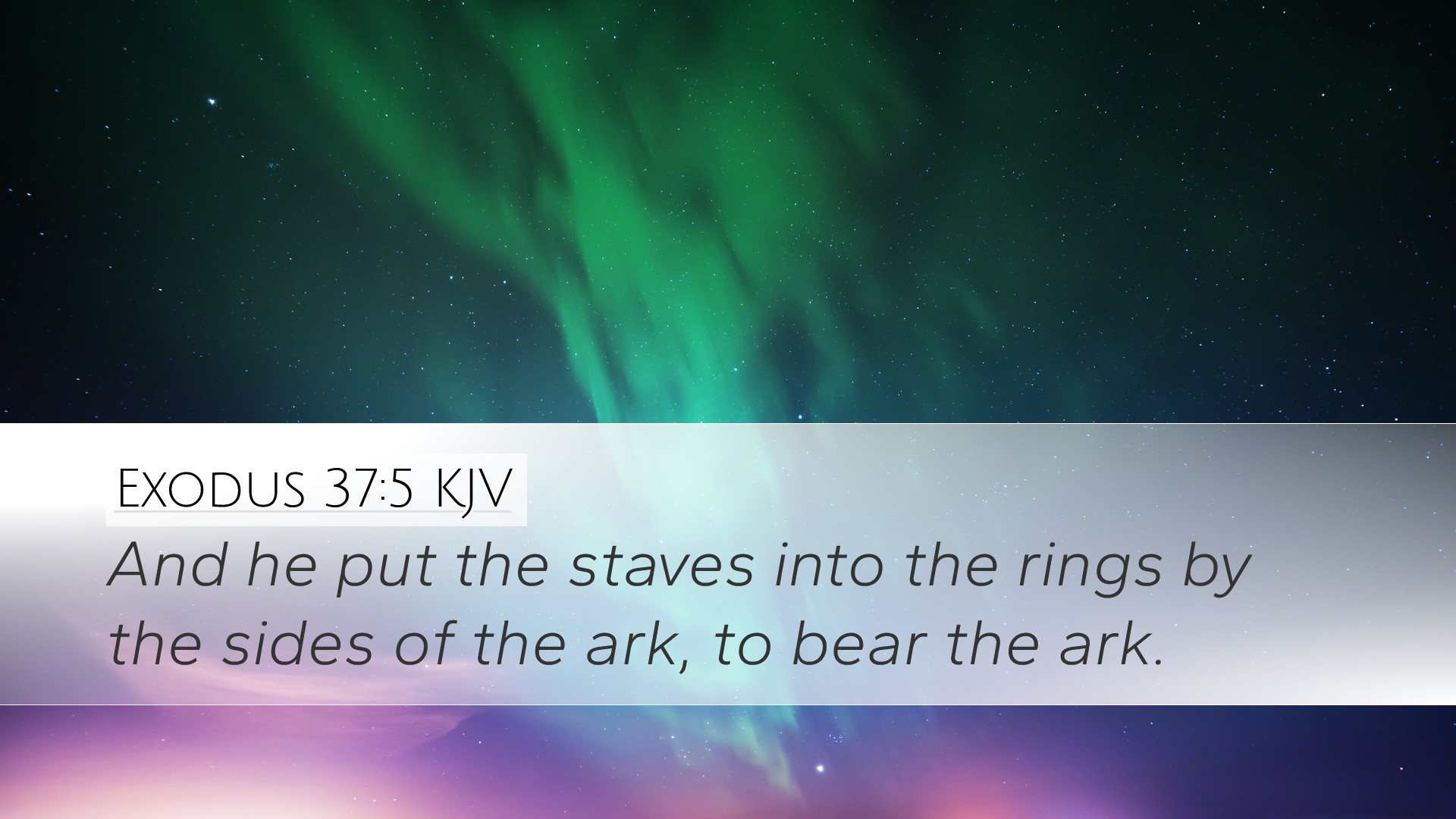Commentary on Exodus 37:5
Verse Context: Exodus 37:5 states, "And he put the staves into the rings by the sides of the ark, to bear the ark." This verse describes a critical aspect of the construction and transportation of the Ark of the Covenant and serves as a key element in understanding the holiness and sanctity associated with God's presence among His people.
Insights from Public Domain Commentaries
1. The Significance of the Ark
Matthew Henry emphasizes that the Ark of the Covenant is a significant symbol of God's presence and covenant with Israel. The Ark not only contained the tablets of the Law but also represented God's throne on earth. The careful handling of the Ark as illustrated in this verse shows the reverence required when dealing with holy things. It was not merely an object; it was a testament to God’s promise and His abiding presence among His people.
2. The Staves and Their Purpose
Adam Clarke discusses the staves inserted into the rings of the Ark. These staves were intended for transport and were a divine specification for moving the Ark. Clarke highlights the importance of keeping the Ark from being touched directly, aligning with God’s holiness. The staves symbolize the idea that the Ark was not to be treated casually; it required a solemn approach, which reflects the seriousness of God's presence in Israel.
3. Symbolism of Carrying the Ark
Albert Barnes points out that the use of staves affirms the reverence and divinely ordained method of transporting the Ark. This serves as an illustration for believers today, signaling the importance of adhering to God’s instructions. Barnes suggests that the act of carrying the Ark is a profound metaphor for believers bearing the presence of God in their lives, demanding a respectful acknowledgment of His holiness.
4. Theological Implications
The act of placing staves into the rings of the Ark is rich with theological implications. The Ark symbolizes God’s covenant with humanity, and the instructions about its transport imply that God desires a relationship that is both sacred and accessible. The careful preservation of its structure and the defined processes for its transport suggest that while God is personal, His holiness must always be honored.
5. Practical Applications for Believers
- Recognizing God’s Presence: Just as the Ark represented God’s presence, believers today should recognize ways in which they can invite and carry the presence of God into their lives and communities.
- Adhering to Divine Instructions: The specific instructions given for the Ark remind believers of the necessity of following God’s word and teachings in their lives.
- Holiness and Reverence: Understanding the significance of how to approach God can lead to a deeper respect and reverence for worship and the sacred acts in the church.
6. Conclusion
The act of placing the staves into the ring of the Ark of the Covenant in Exodus 37:5 highlights the profound respect, care, and holiness that accompanies the various aspects of God’s presence. Aggregating the insights from esteemed commentaries such as those from Matthew Henry, Albert Barnes, and Adam Clarke, we can glean a deeper understanding of the divine nature, the seriousness with which God's commands should be approached, and the practical implications these ancient instructions hold for contemporary believers.


